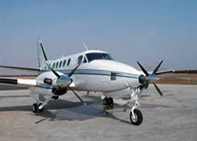A team of researchers from Washington State University have managed to make a series of breakthroughs that could lead to jet fuel production from a common fungus that has undergone some genetic mutation. The researchers have a history of examining the uses of fungus in the wild, but this is the first time their work has moved into a laboratory environment to be tested and measured effectively. Expanding on the job with moulds that led to the creation of antibiotics, the team managed to create a form of Aspergillus carbonarius that can produce commercially viable aviation fuel.
The excitement surrounding the announcement comes from the fact that the fungus requires a diet of rotting fruit, leaves and soils to grow and expand in a low cost and environmentally friendly way. Looking for ways to produce the main ingredient in aviation fuel has been a priority for researchers since the growth of biofuels where the leftovers from corn production often associated with biomass production have been seen as a good source of food for fungi. The latest research included feeding the fungus on many of the leftovers from corn production, which yielded the highest level of hydrocarbon production of any of the foods included in the trial.
Hydrocarbons production can be a long and complicated process for the producers of biofuels, but fungus is designed to have significant work completed by the complex organism itself. The researchers’ team was successful in mutating some of the genes within the fungus to increase production, which could eliminate a series of chemical processes currently required to create biofuel hydrocarbons. The research’s primary focus will now switch to discovering the best ways of producing large amounts of hydrocarbons from Aspergillus carbonarius to produce the level of hydrocarbons needed for production to become commercially viable.
-
Charter planes
 book now >
book now >
-
Air charter services
 book now >
book now >
-
Private charter
 book now >
book now >
-
Business jet charter
 book now >
book now >
-
Executive jet charter
 book now >
book now >


Leave a Reply
You must be logged in to post a comment.